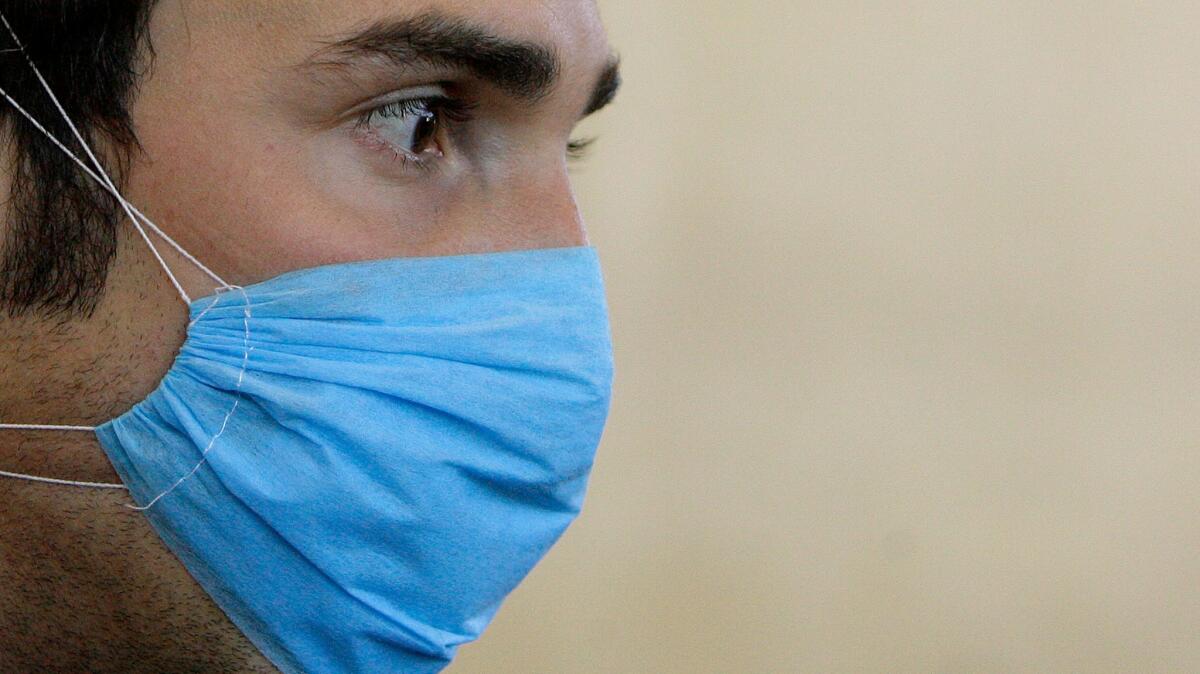Is ‘man flu’ real? Medical science delivers comfort to helpless male snufflers

We’ve all seen him: The man who strides boldly into high-stakes negotiations, risks serious injury to win a pickup basketball game and fearlessly confronts things that go bump in the night, yet is brought low by a tiny virus. He snivels pitiably, wallows in his misery and tests the most forbearing caregiver with his abject helplessness.
The diagnosis often comes with a roll of the eyes. It’s “man flu,” an infectious disease that renders healthy males utterly incapable of self-care.
But is man flu “a thing”? Or is it, well, a thing?
In the annual issue of the British Medical Journal that is devoted to exploring the whimsical side of medical research, Dr. Kyle Sue of Canada’s Memorial University of Newfoundland mounts an ardent defense of males who suffer total collapse in the face of influenza or the common cold.
The news may be filled with stories of entitled men misusing their power over women. But when it comes to fighting off pathogens, Sue casts men in a distinctively more vulnerable light.
Immunologically speaking, men are the weaker sex, writes Sue, a specialist in family medicine. He marshals evolutionary theory, epidemiology and research at the junction of immunology and endocrinology to argue that when it comes to fighting off common infectious diseases, women have the upper hand.
For instance, he cites epidemiological data from Hong Kong showing that men were more likely than women to be admitted to a hospital for any reason between 2004 and 2010, and a U.S. study that found higher rates of flu-related deaths for men than for women between 1997 and 2007.
What biological factors might explain these findings? Gender differences in disease incidence and in vaccination response suggest that hormones may play a role.
Research in cell cultures, animal models and humans shows that variants of the female hormone estrogen promote strong immunological responses to vaccinations and infections, Sue writes. This process can go overboard and lead to auto-immune diseases, which affect more women than men, he notes.
Testosterone, by contrast, appears to have an “immunosuppressive effect” in studies performed in animal and cell cultures.
Sue suggests that men’s immunological deficits may be the natural result of their evolved role in human society. Their quest for dominance meant that they frequently died fighting for the chance to reproduce; women, on the other hand, needed to endure to nurture the resulting offspring.
Quoting evolutionary theorists (and acknowledging the possibility of “author bias”), Sue wonders this: If males burnt up their energies fighting off infections, would it have been a costly distraction from their strategy of attracting sexual partners by growing bigger, stronger and faster? And, by consistently picking these bigger, stronger, faster men over punier men with more robust immune systems, do females have only themselves to blame for the “man flu” phenomenon?
In an extravagant flourish, Sue notes that “there are benefits to energy conservation when ill.” Lying on the couch and having others help out with activities of daily living “could also be evolutionarily behaviors that protect against predators.”
Yes, Sue acknowledges: a man’s physical suffering may seem outsized. But his tendency to become helpless when unwell should be understood as a biological imperative dictated by evolutionary pressures on his entire gender. It should not be dismissed as a sense of entitlement to the pillow-propping, blanket-fetching, chicken-soup-making attentions of loved ones.
This theory could be tested with a clinical trial that divides men infected with a respiratory virus into two groups: the fate of men left to “fend for themselves” would be compared to outcomes of men whose every request is “met by a healthy designated caregiver,” Sue proposed.
Even without a complete understanding of the biological basis for man flu, Sue suggests this policy initiative in the name of public health: “Perhaps now is the time for male-friendly spaces, equipped with enormous televisions and reclining chairs, to be set up where men can recover from the debilitating effects of man flu in safety and comfort.”
MORE IN SCIENCE
America, it’s time to get ready for the flu
Shopping for healthcare online? The odds are stacked against you
Cassini may be dead, but a new era of Saturn science has just begun







